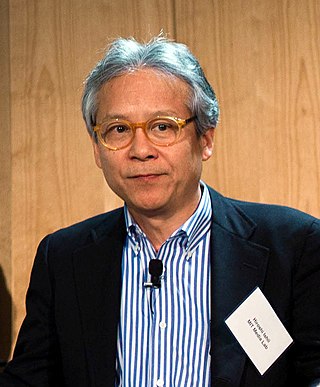Top Qs
Timeline
Chat
Perspective
Hiroshi Ishii (computer scientist)
Japanese computer scientist From Wikipedia, the free encyclopedia
Remove ads
Hiroshi Ishii (石井 裕, Ishii Hiroshi; born 1956) is a Japanese computer scientist and a professor at the Massachusetts Institute of Technology. He is also Associate Director of the MIT Media Laboratory.[1]
Remove ads
Early life and education
Ishii was born in Tokyo and raised in Sapporo, Japan. He received a Bachelor of Engineering degree in electronic engineering (1978), and Master of Engineering (1980) and PhD (1992) in computer engineering, all from Hokkaido University in Sapporo.[1]
Career
Summarize
Perspective

Ishii worked at Japan's NTT Human Interface Laboratories in Yokosuka, where he made his mark in Human-Computer Interaction (HCI) and Computer-Supported Cooperative Work (CSCW) in the early 1990s.[2]
During his time at NTT, he co-authored two papers. In 1990 he and Kazuho Arita created the "TeamWorkStation." This device allowed users to record their desk and broadcast it to another user in a video conference, similar to a service like Zoom or Discord.[3] His second project at NTT was the "ClearBoard", which was published in 1992. This piece of technology allowed to users to write on a see-through white-board like device that allowed them to maintain eye contact while collaborating.[4]
In 1995, he joined the MIT Media Laboratory as a professor of Media Arts and Sciences, and founded the Tangible Media Group and started their ongoing Tangible Bits project.[5]
In 1997, Ishii pioneered Tangible User Interfaces (TUI) in the field of human-computer interaction with the paper "Tangible Bits: Towards Seamless Interfaces between People, Bits and Atoms",[6] co-authored with his then PhD student Brygg Ullmer.
In 2012, he extended his vision of HCI to "Radical Atoms", a hypothetical future generation of materials which can change form and properties dynamically and computationally, becoming as reconfigurable in the physical 3D world as pixels on a 2D graphical user interface (GUI) screen.[1] Ishii's inFORM display, released in 2013, is a tactile tabletop device for prototyping interfaces, with an appearance compared to a pin board.[7] The TRANSFORM, a larger-scale shape-changing table, received the A'Design Platinum Award in 2015.[8][9]
Ishii was elected to the CHI Academy in 2006. In 2019, he received the SIGCHI Lifetime Research Award.[10] He was named to the 2022 class of ACM Fellows, "for contributions to tangible user interfaces and to human-computer interaction".[11]
As of 2025[update], he teaches the class MAS.834 Tangible Interfaces at the Media Lab.[1]
Remove ads
External links
Wikiwand - on
Seamless Wikipedia browsing. On steroids.
Remove ads

